INDEPENDENT RESEARCH PROJECT (IRP)
Florida State University faculty from departments such as Biological Science, Biomedical Sciences, Chemistry, Computer Science, Earth, Ocean and Atmospheric Science, Engineering, Physics, and Psychology; from programs such as Geology, Materials Research and Technology, Meteorology, Neuroscience, and Oceanography; and from the Center for Ocean Atmospheric Prediction Studies (COAPS) and the National High Magnetic Field Laboratory (Mag Lab) regularly sponsor students to join their research teams for the six-week Young Scholars Program. The research sponsors and the projects offered vary from year to year, but strong support from university scientists ensures the young scholars are always offered cutting edge research opportunities.
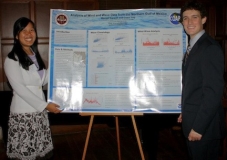 |
Each participating faculty member sponsors between one and three students, who spend two days each week working on their independent research project under the supervision of their faculty sponsor, postdoctoral associate(s), laboratory staff, and/or graduate student(s). The students do not propose their own research topics, but rather work on some aspect of the research in which the sponsoring lab is currently involved. The nature of the research experience varies from project to project, as some projects are computer-related or computer-based, while others consist of laboratory or field research. |
| Students accepted into the program are sent a list of the currently available research sponsors along with project descriptions. While students preferences are solicited and taken into account when making IRP assignments, the ultimate decision is up to the program faculty and staff. The students research activities culminate in a poster session during the last week of the program, which is attended by university faculty and officials. Participants are required to submit a final research paper before the end of the program. | 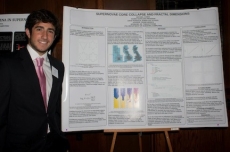 |
Selected Past IRP Titles:
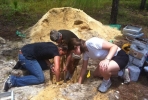 |
Aligning images of insect flight muscle from a transmission electron microscope in order to analyze cross sections. Biological Science.
Characterization of ssDNA bacteriophage isolated from Florida wastewater treatment plants. Biological Science. |
| The Effects of Top Predators and Resources on Ecosystem Pressures. Biological Science. |
| Mutant histone H3.3 associated with pediatric glioblastomas exhibit aberrant recruitment following DNA damage. Biomedical Science.
Study of the role of Dsk1 in aggresome formation. Biomedical Science. |
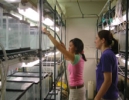 |
| Computer Simulation of Drug Molecule Trans-Membrane Permeations. Chemistry. |
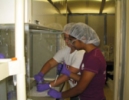 |
Light-harvesting organic materials for organic solar cells. Chemistry and Biochemistry.
Sight through sound: using mobile technology for vision impaired users. Computer Science. |
| Observational Verification of Previously Unidentified Tropical Cyclones in the Western Pacific Basin. Earth, Ocean and Atmospheric Science. |
| Validation of Ocean Model Temperature and Salinity Using Research Vessel Observation. Earth, Ocean and Atmospheric Science.
Wave Amplification over a Submerged Shoal with Applications to Wave Energy Converters. Geophysics. |
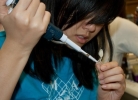 |
| Launching mechanism for a multi-modal climbing and gliding platform. Mechanical Engineering. |
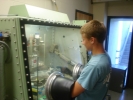 |
ICAROS- Integrated Climbing and Arborial Robotic Omithopter System. Mechanical Engineering.
High Resolution Compositional Analysis of Blue Crude Oil. National High Magnetic Field Laboratory. |
| The Use of a Precision Penning Trap for Atomic Mass Spectroscopy: Masses of 40Ca and 88Sr. Physics. |
| Real-time Dynamics in Nearly Frozen Coulomb Liquids. Physics.
Resistive Switching in Memristor Devices. Physics. |
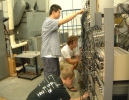 |
| Fractal Characteristics of the Rayleigh-Taylor Instability. Scientific Computing.
Spectral analysis of turbulent phenomena in supernovae. Scientific Computing. |

